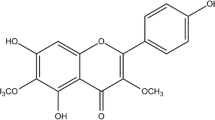Abstract
We investigated the direct effects of various commercially available preparations of red raspberry leaf (RRL) on the in vitro contractility of uteri collected from diethylstilbestrol (DES)-treated nonpregnant (NP) and late pregnant rats. In DES-treated NP rats, RRL tea and capsule caused weak contractions. Neither preparation affected the ability of oxytocin to initiate contractions; however, both partially inhibited preexisting oxytocin-driven contractions at the highest concentration tested. Red raspberry leaf ethanol extract had little effect on contractility. Pretreatment with tea did not alter the ability of oxytocin to initiate contractions. In pregnant animals red raspberry leaf tea had variable effects on preexisting oxytocin-induced contractions, sometimes augmenting oxytocin’s effect and sometimes causing augmentation followed by inhibition. We conclude that the biological activity of RRL varies depending on the herbal preparation used and pregnancy status. These results do not support the hypothesis that RRL augments labor by a direct effect on uterine contractility.
Similar content being viewed by others
References
Kelly JP, Kaufman DW, Kelley K, Rosenberg L, Mitchell AA. Use of herbal/natural supplements according to racial/ethnic group. J Altern Complement Med. 2006;12(6):555–561.
Najm W, Lie D. Dietary supplements commonly used for prevention. Prim Care. 2008;35(4):749–767.
Eisenberg DM, Davis RB, Ettner SL, et al. Trends in alternative medicine use in the United States, 1990–1997: results of a follow-up national survey. JAMA. 1998;280(18):1569–1575.
Kennedy J. Herb and supplement use in the US adult population. Clin Ther. 2005;27(11):1847–1858.
Conover EA. Herbal agents and over-the-counter medications in pregnancy. Best Pract Res Clin Endocrinol Metab. 2003;17(2):237–251.
Holst L, Wright D, Haavik S, Nordeng H. The use and the user of herbal remedies during pregnancy. J Altern Complement Med. 2009;15(7):787–792.
Nordeng H, Havnen GC. Impact of socio-demographic factors, knowledge and attitude on the use of herbal drugs in pregnancy. Acta Obstet Gynecol Scand. 2005;84(1):26–33.
Refuerzo JS, Blackwell SC, Sokol RJ, et al. Use of over-the-counter medications and herbal remedies in pregnancy. Am J Perinatol. 2005;22(6):321–324.
Tsui B, Dennehy CE, Tsourounis C. A survey of dietary supplement use during pregnancy at an academic medical center. Am J Obstet Gynecol. 2001;185(2):433–437.
Tiran D. The use of herbs by pregnant and childbearing women: a risk-benefit assessment. Complement Ther Nurs Midwifery. 2003;9(4):176–181.
Low Dog T. The use of botanicals during pregnancy and lactation. Altern Ther Health Med. 2009;15(1):54–58.
McFarlin BL, Gibson MH, O’Rear J, Harman P. A national survey of herbal preparation use by nurse-midwives for labor stimulation. Review of the literature and recommendations for practice. J Nurse Midwifery. 1999;44(3):205–216.
Simpson M, Parsons M, Greenwood J, Wade K. Raspberry leaf in pregnancy: its safety and efficacy in labor. J Midwifery Womens Health. 2001;46(2):51–59.
Bamford DS, Percival RC, Tothill AU. Raspberry leaf tea: a new aspect to an old problem. Br J Pharmacol. 1970;40(1): 161P–162P.
Burn JH, Withell ER. A principle in raspberry leaves which relaxes uterine muscle. Lancet. 1941;238(July 5):1–3.
Beckett AH, Belthle FW, Fell KR, Lockett MF. The active constituents of raspberry leaves; a preliminary investigation. J Pharm Pharmacol. 1954;6(11):785–796.
Crankshaw DJ. Pharmacological techniques for the in vitro study of the uterus. J Pharmacol Toxicol Methods. 2001;45(2): 123–140.
Niiro N, Nishimura J, Hirano K, Nakano H, Kanaide H. Mechanisms of galanin-induced contraction in the rat myo-metrium. Br J Pharmacol. 1998;124(8):1623–1632.
Wainman BC, Burcea I, Crankshaw DJ. The effects of prostanoids on estrogen dominated rat myometrial longitudinal muscle. Biol Reprod. 1988;39(2):221–228.
Crankshaw DJ, Gaspar V. Effects of prostanoids on the rat’s myometrium in vitro during pregnancy. Biol Reprod. 1992; 46(3):392–400.
Freerksen N, Betancourt A, Maul H, et al. PAR-2 activating peptide-induced stimulation of pregnant rat myometrium contractile activity partly involves the other membrane receptors. Eur J Obstet Gynecol Reprod Biol. 2007;130(1): 51–59.
Mesiano S, Welsh TN. Steroid hormone control of myometrial contractility and parturition. Semin Cell Dev Biol. 2007; 18(3):321–331.
Rojas-Vera J, Patel AV, Dacke CG. Relaxant activity of raspberry (Rubus idaeus) leaf extract in guinea-pig ileum in vitro. Phytother Res. 2002;16(7):665–668.
Patel AV, Rojas-Vera J, Dacke CG. Therapeutic constituents and actions of Rubus species. Curr Med Chem. 2004;11(11): 1501–1512.
Gudej J, Tomczyk M. Determination of flavonoids, tannins and ellagic acid in leaves from Rubus L. species. Arch Pharm Res. 2004;27(11):1114–1119.
Revuelta MP, Cantabrana B, Hidalgo A. Depolarization-dependent effect of flavonoids in rat uterine smooth muscle contraction elicited by CaCl2. Gen Pharmacol. 1997;29(5): 847–857.
Revuelta MP, Hidalgo A, Cantabrana B. Involvement of cAMP and beta-adrenoceptors in the relaxing effect elicited by flavonoids on rat uterine smooth muscle. J Auton Pharmacol. 1999;19(6):353–358.
Revuelta MP, Cantabrana B, Hidalgo A. Mechanisms involved in kaempferol-induced relaxation in rat uterine smooth muscle. Life Sci. 2000;67(3):251–259.
Unger M, Frank A. Simultaneous determination of the inhibitory potency of herbal extracts on the activity of six major cytochrome P450 enzymes using liquid chromatography / mass spectrometry and automated online extraction. Rapid Commun Mass Spectrom. 2004;18(19):2273–81.
Johnson JR, Makaji E, Ho S, Xiong B, Crankshaw DJ, Holloway AC. Effect of maternal raspberry leaf consumption in rats on pregnancy outcome and the fertility of the female offspring. Reprod Sci. 2009;16(6):605–609.
Holst L, Haavik S, Nordeng H. Raspbery leaf—should it be recommended to pregnant women? Complement Ther Clin Pract. 2009;15(4):204–208.
Author information
Authors and Affiliations
Corresponding author
Rights and permissions
About this article
Cite this article
Zheng, J., Pistilli, M.J., Holloway, A.C. et al. The Effects of Commercial Preparations of Red Raspberry Leaf on the Contractility of the Rat’s Uterus In Vitro. Reprod. Sci. 17, 494–501 (2010). https://doi.org/10.1177/1933719109359703
Published:
Issue Date:
DOI: https://doi.org/10.1177/1933719109359703




